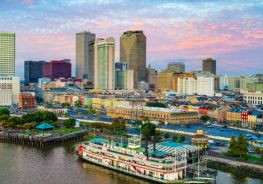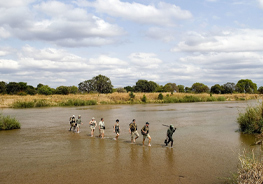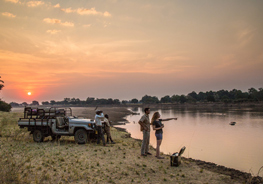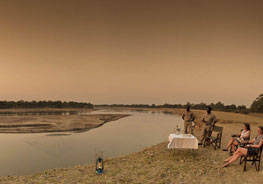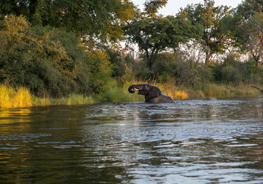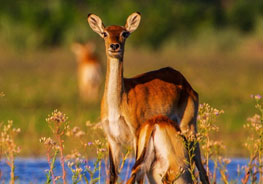Call Us
8:00am - 17:00PM
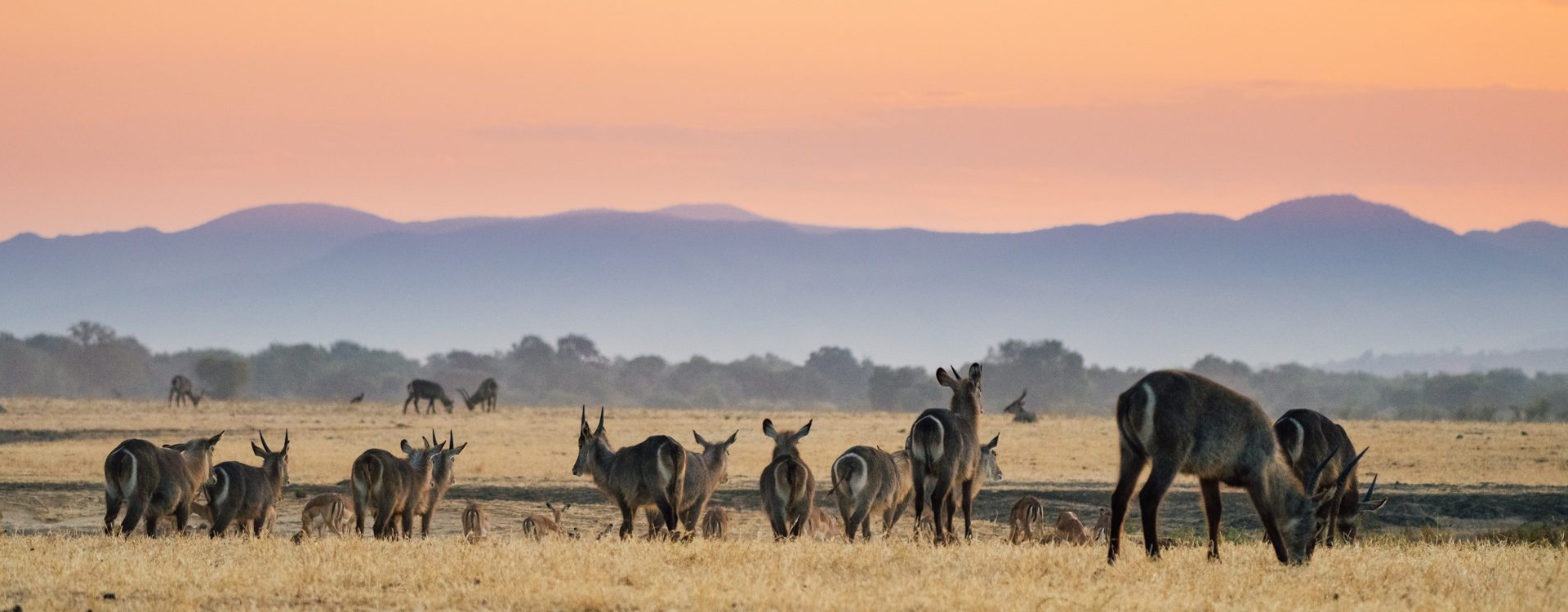
Zambia Travel Facts
Zambia
Travel Facts
During the course of your trip, Zambia Travel Facts will leave you with a sense of amazement and wonder. The main draw of visiting Zambia is exploring the enchanting off-beaten tracks of wilderness. Plus with the range of wildlife, Zambia Safari experiences are filled with astonishing adventures.
You won’t know what undiscovered gems you’ll get to find out on the next step. You’ll be transported deep into the Zambian Bush where animals wander through the vast plains. And, where you’ll swap expedition tales around the light of the bonfire.
Before your Zambia Safari Tour, you should know some fascinating facts about travelling here. Because they’ll heighten your experience even more. So, let’s not beat around the bush! The following are some Interesting Facts About Zambia.
Overview Of Zambia Facts
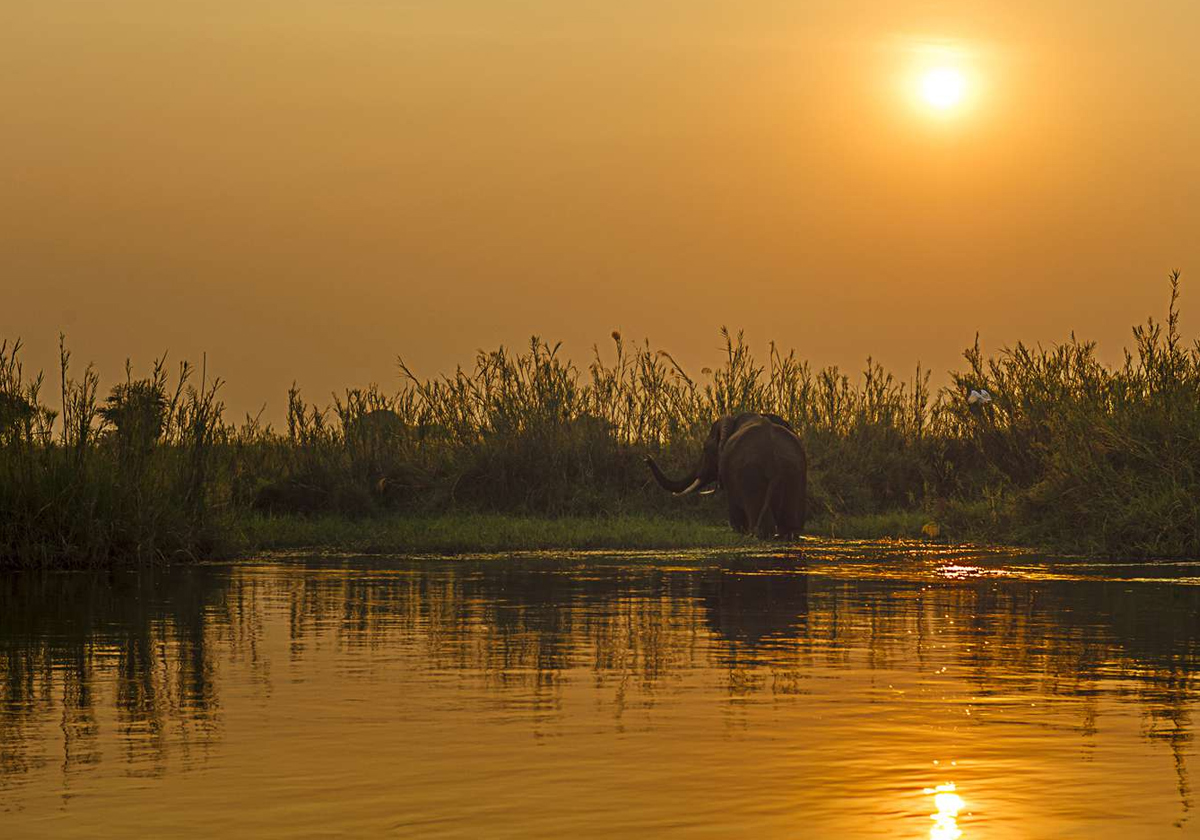
Before we get into the logistics of the travel facts, here’s a quick overview of Zambia.
|
Population – 19 million (estimated in 2022) |
|
Capital City – Lusaka, with a population of 3.5 million |
|
Total Area – 752,617 sq. km. |
|
Geographical Coordinates - 13.1339° S, 27.8493° E |
|
Map References – Africa |
|
Climate – Subtropical |
|
Geography Notes - Landlocked |
|
Origin of the name – The name of Zambia comes from the Zambezi River that flows along the border between Zimbabwe and Zambia. |
|
Slogan – ‘One Zambia, One Nation.’ This reflects the need for unity in a country with over 72 ethnic groups. |
|
Official Language – English |
|
Currency – Zambian kwacha (1 Kwacha is equal to 100 Ngwee) |
|
Time Zone – Central African Time (GMT +2) |
|
Calling/Dial Code - +260 |
|
Electricity – The electric current in Zambia is 220 volts, 50Hz. Two-and-three-pin round plugs and square three-pin plugs can be used. |
|
Historical Background – Before European settlers came to the African continent, the Khoisan (Bushmen) communities lived in the area. From 1924 to 1953, the area was a British colony called Northern Rhodesia or Zambesia. In 1964, the country achieved independence. |
|
National Day – 24th October |
|
National Animal – African Fish Eagle |
|
National Flower – Bougainvillaea |
Zambia Geographical Facts
Zambia is situated in Southern Africa and is a landlocked country. The geography of the country consists primarily of hills, mountains, high plateaus, and river valleys.
- Zambia is the 38th largest country on the entire planet.
- The Zambezi or Kafue basin located in the centre, south, and west covers about three-quarters of the country.
- The Congo basin in the north covers one-quarter of Zambia.
- Zambia is roughly three times the size of the United Kingdom and is slightly larger than the state of Texas. The country is just slightly smaller in size than the country of Chile.
- The highest point in Zambia is the Mafinga Peak. With a height of 2,301 metres or 7,549 feet.
- The longest river in Zambia is the Zambezi River. With a length of 2,574 metres or 8,444 feet long.
- There is one UNESCO World Heritage Site in Zambia, i.e. the Mosi-oa-Tunya, also known as Victoria Falls.
The bordering countries of Zambia are the Democratic Republic of Congo, Tanzania, Malawi, Zimbabwe, Botswana, Mozambique, Namibia, and Angola.
Before you go on a Zambia Safari, you need to know what airports are in the country. To make sure there is no confusion, below is a list of different Zambia International Airports that you can fly into.
|
INTERNATIONAL AIRPORTS IN ZAMBIA |
||
|---|---|---|
|
NAME OF THE AIRPORT |
IATA CODE |
LOCATION |
|
Harry Mwanga Nkumbula International Airport |
LVI |
Livingstone |
|
Kenneth Kaunda International Airport |
LUN |
Lusaka |
|
Simon Mwansa Kapwepwe International Airport |
NLA |
Ndola |
Zambia Attractions Facts

Zambia is a premier travel destination because of its largely unexplored surroundings and the diversity of wildlife and birdlife. The charming towns of Lusaka and Livingstone aren’t far behind either. You can visit several museums, go shopping on the street corners, or even take Zambia Day Trips to cultural villages.
Yet the central highlight of travelling to the country is going on Zambia Safari. The national parks of Zambia offer a collection of endless things to do and experience. With that in mind, below are some major facts about Zambia’s popular attractions.
Victoria Falls
A major attraction of Zambia is Victoria Falls, one of the seven natural Wonders of the world. The falls reign supreme as one of the top attractions for people on a Zambia Tours And Safaris. The Falls are located on the border between Zimbabwe and Zambia.
- The name of the falls means ‘the smoke that thunders.’
- The noise of the flowing waters can be heard from as far as 30 km away.
- The width of Victoria Falls is more than 1,700 metres or 5,600 feet wide.
- David Livingstone was the first European who saw the sight of the mighty falls on the Zambezi River. The name of the falls comes from the queen at that time – Queen Victoria.
- Victoria Falls is the largest sheet of falling water on Earth. With 500 million litres of water flowing down every minute.
Kafue National Park
The largest national park in Zambia, Kafue National Park stretches across an area of 22,400 sq. km. The park is named after the Kafue River – the longest river in Zambia.
- Kafue National Park is one of the largest national parks in Africa and the oldest one in Zambia.
- It’s one of the most remote national parks in Africa and is somewhat of a hidden treasure of Zambia.
- The habitats of the park are made up of seasonal floodplains, rich wetlands, and the Kafue and Lunga Rivers.
- Home to some of the densest predator populations and some of the biggest Nile crocodiles across southern Africa.
- Over 500 different species of birds can be seen in the park too.
Lower Zambezi National Park
One of the chief wildlife and safari destination, Lower Zambezi National Park is located along the lower section of the Zambezi River. The highlight of the park is the remote location and untouched wilderness.
- The habitats of the park support a fabulous diversity of wildlife.
- One of the best Zambia Destinations for walking safaris.
- Home to some of the best luxury accommodations.
- You can go on cultural tours to the Goba villages.
South Luangwa National Park
This national park has some of the densest concentrations of wildlife in the whole of Africa. It’s also home to a significant number of rare and endemic species like the Thornicroft’s giraffe, Crawshay’s zebra, and Cookson’s wildebeest.
South Luangwa National Park is also one of the best Zambia Destinations to go on boating and walking safaris.
Kasanka National Park
Kasanka is located just south of the Bangweulu Wetlands, close to the border with the Democratic Republic of Congo. The area is considered one of the most beautiful reserves in Zambia.
- The habitats of the park consist of swamp forests, miombo woodlands, and papyrus marshes with various crisscrossing rivers and seasonal pools.
- These rich habitats offer a home to plenty of wildlife and more than 500 bird species.
- The top attraction of the park by far is the annual bat migration. Every year, the skies of the park come alive with more than 10 million straw-coloured fruit bats.
- This incredible phenomenon happens from late November to December.
Zambia’s Waterfalls
Victoria Falls is one of the most popular waterfalls on the planet. It tends to steal away the limelight from other wonderful Zambia waterfalls. Other waterfalls should be on your Zambia Safari Packages too. They include Sioma Falls, Lumangwe Falls, Ntumachushi Falls, etc.
Zambia’s Lakes
The history and the utter size of Lake Tanganyika are sure to captivate the hearts of every traveller. Whereas, the off-beaten tracks of Lake Mweru will also draw you in with an understated charm.
Relaxing on the shores of Lake Kariba will be a tranquil Zambia Holiday Tour indeed!
Towns of Zambia
The expansion of Zambia’s major towns and cities has been extensive in recent years. This is largely due to the impact that Zambia Tourism has had. The capital city of Lusaka is one of the rapidly growing cities in Africa. Whereas, the historic town of Livingstone has transformed into Africa’s adventure capital.
Adventure Activities in Zambia
There are plenty of adventure activities for adrenaline junkies in Zambia. The adventure capital of Livingstone is the place to be. This is where you’ll get to take part in activities such as white water rafting down the rapids of the Zambezi River.
Leisure Activities in Zambia
When the time comes to take a few time off and kick back, Zambia Destinations won’t disappoint one bit. You’ll get to unwind at a luxurious spa, explore the culture of a local village, or set off on a sunset river cruise.
Fishing in an off-beaten location and taking a relaxing cruise on a houseboat are things that should be on the top of your travel list too.
Zambia Economy Facts
The economy of Zambia is primarily driven by the mining sector, tourism, and agriculture. The mining industry of Zambia consists of cobalt and copper mining. The main mining region is in the northwest, that’s known as the copper belt.
- The export sector mainly trades gold, corn, cotton, flowers, and sugar.
- The trading partners of Zambia are China, South Africa, and Switzerland.
Zambia Weather Facts
Zambia has a sub-tropical climate, where most of the country is characterized by humid tropical weather. Though, there are some patches of semi-arid climate in the southwestern region. The climate is distinguished by three main seasons:
- Warm days with colder nights (From April to July)
- Hot and Dry Season (From August to October)
- Warm and wet season (From November to March)
The Best Time To Visit Zambia depends on what you want to see and experience.
- June to October is usually considered the best time for photographic and walking safaris.
- August to October is the peak or high season in Zambia. Much of the water in the national parks during this time gets dried up because there’s hardly any rain. As a consequence, several herds of wildlife concentrate at the different water holes and rivers.
- November to April is the best time for birdwatching in Zambia as there are a lot of migrant species present. Though, some of the accommodations close due to the heavy rainfall.
- February to May sees the flowing waters of Victoria Falls at their highest and most incredible. Prepare to be soaked from head to toe!
- Towards the end of April and Mid-June, Livingstone Island, at the edge of Victoria Falls remains closed. Some river-based adrenaline activities may also be closed during this period.
Zambia Languages And Culture Facts
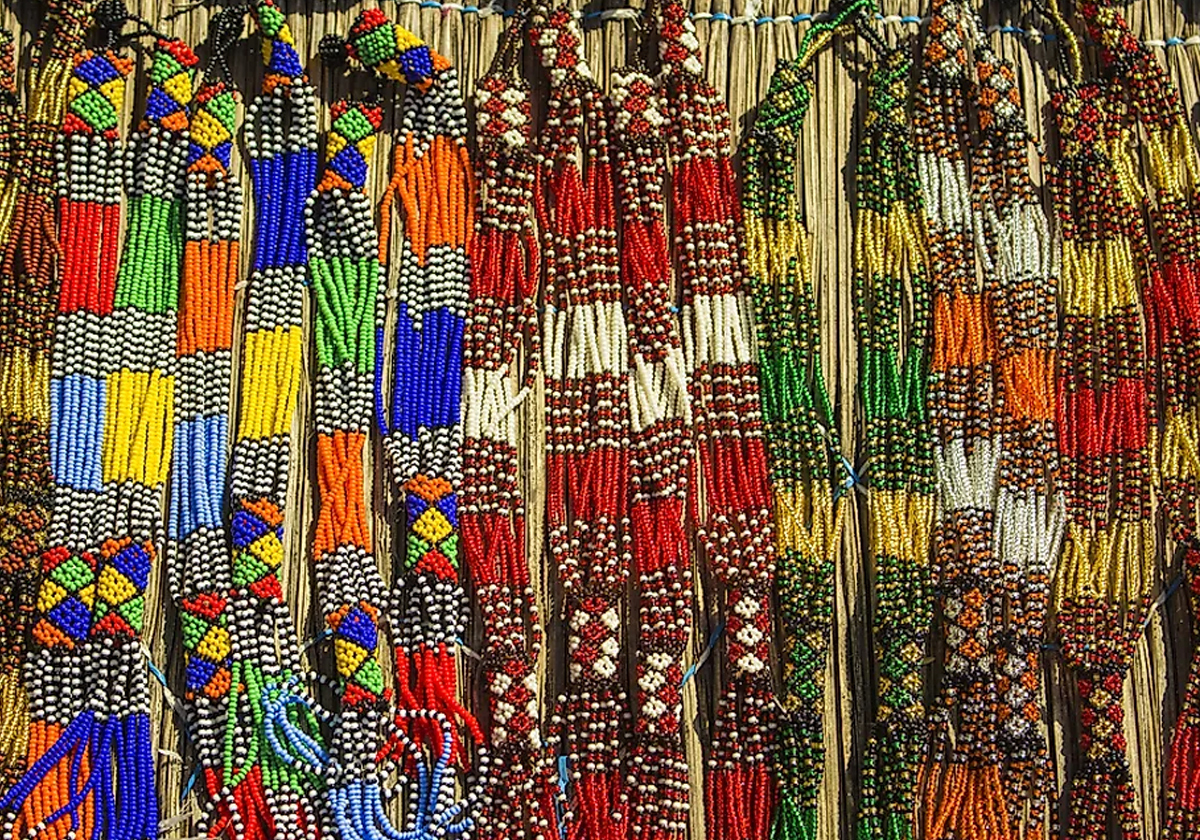
There are more than 72 languages spoken across the country of Zambia. Though the official language is English. Besides this, seven native languages are used in official communication and taught in schools. These include Konde, Lozi, Luna, Luvalee, Nyanja, and Tonga. The most widely spoken and understood languages are Nyanja and Bemba.
The different native ethnic groups of Zambia lived in their community and maintained their culture in the colonial days. With the arrival of urbanization, much of that has changed, but the native communities of Zambia still keep their traditions and celebrate over 20 ceremonies and cultural festivals every year.
- While on a Zambia Cultural Tour, you can visit the villages of the native communities and get an understanding of their way of life.
- On day tours, you can discover the traditional arts and crafts of Zambia. It’s mainly expressed in basketry, carvings, and pottery. Crafts made from recycled materials can be seen in curio centres and marketplaces.
- Christianity is the primary religion of Zambia. Although, everyone in the country is free to practice their belief systems.
The best way to get a conclusive understanding of the rich culture of Zambia is by taking Livingstone Museum Tours and Mukuni Village Tour.
Zambia Flag Facts
The brightly coloured flag of Zambia is full of meaning and symbolism.
- The principal green background signifies the country’s rich agricultural wealth and vegetation.
- The red stripe is a memorial of the struggle in the fight for freedom against colonial rule.
- The black stripe is a symbol of the original inhabitants of the land.
- The bright orange signifies Zambia’s wealth in copper.
- The orange African fish eagle soaring above the stripes is a symbol of the freedom of the people. It’s also a representation of people’s ability to rise to whatever challenges they may face as a nation.
The Zambian flag can only be flown between sunrise and sunset. The transportation of the flag should only be performed on ships and institutions approved by the government.
Zambia Music Facts
The traditional music of Zambia is distinguished by plenty of singing and dancing. The most played instrument is the drum, with other instruments not far behind. They include the thumb piano (Kalimba, kangombio, or kathandi) and the kilimba (xylophone or marimba).
In the contemporary day, the music of Zambia is a blend of western, African, and traditional sounds with some influences from other African countries. Such as South Africa and the Democratic Republic of Congo.
Zambia Food Facts
The staple food of Zambia is maize and Nshima makes up the main element of Zambia Foods. Nshima is made from pounded white maize and is primarily served with stew, vegetables, and relish. The following are some more delicacies of Zambia.
- Ifisashi – This is a vegetarian dish made from leafy vegetables and peanuts. The peanuts are grounded into a powder and chopped greens, tomatoes, and onions are added afterwards.
- Samp – This dish is made from dried-up corn kernels and served with slow-cooked beans. This makes for a greatly appetizing combination.
- Chikanda – This dish is Zambia’s take on the sausage. It’s made from a combination of chilli, baking soda, orchid tubers, and peanuts. In some areas of Zambia, the dish is also known as African polony.
If you want to completely immerse yourself in the culture of Zambia then you must try out these cuisines on your Zambia Safaris. Most of the streetside food stalls and restaurants serve a range of Zambia Foods that will appeal to your tastebuds.
|
10 MOST PRODUCED FOODS IN ZAMBIA |
|
|---|---|
|
NAME OF THE FOOD |
QUANTITY PRODUCED (in tonnes) |
|
Sugarcane |
4,994,302 |
|
Cassava |
4,036,584 |
|
Corn |
2,004,389 |
|
Milk |
453,104 |
|
Fresh Vegetables |
402,406 |
|
Soybeans |
281,389 |
|
Beef |
191,349 |
|
Wheat |
151,850 |
|
Groundnuts |
130,825 |
Zambia Wildlife And Birdlife Facts
Technically speaking, Zambia has all of the big five species, though rhinos are extremely rare and are only found in North Luangwa National Park and Mosi-oa-Tunya National Park.
- When you look beyond the big five, you’ll find that Zambia is teeming with fascinating endemic wildlife. These include the Thornicroft’s giraffe, black lechwe, and Crawshay’s zebra.
- The rivers and lakes of Zambia offer great wildlife sightings and excellent fishing. There’s a large population of hippos and crocodiles in Zambia and the Zambezi River is renowned for the concentration of tigerfish.
|
NAME OF THE ANIMAL |
AVERAGE SPOTTING PERCENTAGE |
|---|---|
|
African Wild Dog |
39% |
|
Leopard |
81% |
|
Lion |
87% |
|
Cheetah |
4% |
|
Cape Buffalo |
84% |
|
Giraffe |
94% |
|
Elephant |
95% |
|
Eland |
12% |
|
Hippo |
96% |
|
Spotted Hyena |
79% |
|
Wildebeest |
44% |
|
Roan Antelope |
11% |
|
Sable Antelope |
6% |
|
Zebra |
88% |
|
Black Rhinoceros |
5% |
|
White Rhinoceros |
29% |
|
Sitatunga |
14% |
|
RARE WILDLIFE SPECIES IN ZAMBIA |
|
|---|---|
|
NAME OF THE ANIMAL |
BEST PLACE TO SPOT THEM |
|
Thornicroft’s Giraffe |
Luangwa Valley |
|
Cookson’s Wildebeest |
North Luangwa National Park |
|
Crawshay’s Zebra |
South Luangwa National Park |
|
Black Lechwe |
Bangweulu Plains and Kasanka National Park |
|
Cheetah |
Kafue National Park |
|
Black Rhinoceros |
North Luangwa National Park |
|
White Rhinoceros |
Mosi-oa-Tunya National Park |
|
Puku Antelope |
Zambezi and Luangwa Valley |
Zambia is home to more than 780 different species of birds and is a sanctuary for both endangered and endemic species. This makes for spectacular Zambia Birdwatching Safaris.
- One of the rarest birds on the African continent – the shoebill stork can be found in the northern area of Zambia with the Bangweulu swamps being the best place to see them.
- Other endangered species of birds that can be seen in Zambia include the ground hornbill, Bateleur eagle, Wattled crane, Egyptian Cape Vulture, African skimmer, Grey Crowned-crane, etc.
- The country is also home to three endemic species of birds. They are the Chaplin’s barbet, the Black-cheeked lovebird, and the White-chested tinkerbird.
The best time for a birdwatching safari in Zambia is during the wet season (From November to April). This is also the time when migratory species of birds arrive in the various Zambia National Parks.
Zambia Conservation Facts
The country of Zambia is wholeheartedly committed to biodiversity and wildlife conservation. The Zambia Wildlife Authority effectively manages all the national parks and reserves through community-based initiatives and public-private alliances.
- Their goal is to improve the balance and quality of life in and near the protected areas, maintain sustainable biodiversity, and reverse the decline of the wildlife population.
- Zambia also champions wildlife-based tourism as a means of rural development. This also helps in improving the livelihood of the native communities.
As a result, Kafue National Park has seen special government attention and has restored the concentration of elephants. And, the population of rhinos has been reintroduced in North Luangwa National Park. This is thanks to the efforts of the North Luangwa Conservation Programme (NLCP) and the anti-poaching units. Now, there are more than 330 black rhinos in the park.
Before embarking on your journey to Zambia, it's important to be aware of the Zambia Travel Facts. Remember to check the latest travel advisories and consult with official sources before your trip to stay informed about any Zambia Travel Requirements. By being well-prepared, you can have a safe and memorable Safari In Zambia.
Related Zambia Travel Guide
We Think You’ll Love
Frequently Asked Questions
We Think You’ll Love
The 5 Interesting Facts About Zambia are as follows:
- Zambia is a completely landlocked country which was named after the fourth-largest river in Africa – the Zambezi River.
- More than 72 languages are spoken across Zambia. Although, the official language of the country is English.
- The country is home to the largest man-made lake on the planet – Lake Kariba.
- Zambia has one of the largest waterfalls on Earth – Victoria Falls. Emil Holub, a Czech explorer was the first person who created a detailed map of Victoria Falls.
- The biggest export in Zambia is copper. Around 1.5 million tonnes of copper is produced in Zambia every year.
Zambia is renowned for pioneering walking safaris. The national parks of Zambia are located in remote regions which is why a private safari experience is perfect here. Zambia is a largely undiscovered land with a variety of game viewing and other Things To Do In Zambia.
Victoria Falls and South Luangwa National Park are among the top places that are visited by people on a Zambia Safari Tour. Victoria Falls is the largest sheet of falling water on our planet and is one of the biggest waterfalls as well. Whereas, South Luangwa National Park has huge herds of elephants and buffaloes. An abundant population of hippos is also in the park, they can mainly be seen in the swampy regions.
There are more than 70 different ethnically diverse cultures in Zambia. The culture of Zambia is a combination of spiritual traditions, values, and norms. Most of Zambia’s tribal communities moved to the area in a series of migratory waves a few centuries back. They multiplied in numbers and many travelled in search of pastures and farming land.
Zambia is considered one of the most rewarding African safari destinations. It’s best known as the homeland of Victoria Falls and boasts 20 national parks. A Zambia Safari Package is guaranteed to offer visitors some unforgettable experiences, be it on safaris or day trips around the metropolitan towns of Lusaka and Livingstone.
The best month for a Zambia Safari is from June to November. This is also called the dry season; safari activities and game viewing are at their best during these months. The skies will be crystal clear and the days will be warm and the nights cold. Temperatures during this time range from 36 Celsius to 23 Celsius.
The staple traditional food of Zambia is maize (corn). The people of Zambia eat maize in several ways. When the corn is ripe and green, it can be boiled or roasted. When it’s hard and dry, it can be fried. Though, the staple cuisine of Zambia is Nshima.
Zambia National Parks are home to a lot of rare wildlife species. They include different near-threatened, endangered, and endemic animals. Expect sightings of rare wildlife like cheetahs, Thornicroft’s giraffe, Crawshay’s zebra, black lechwe, white and black rhinos, puku antelope, etc.
The land of Zambia was called Northern Rhodesia from 1911 to 1964. After independence from British rule in October 1964, the region was renamed Zambia. The name of the country comes from the Zambezi River. Zambezi means great or Grand River.
Zambia is divided into 10 provinces. They are:
- Central Province
- Eastern Province
- Northern Province
- North-Western Province
- Southern Province
- Western Province
- Copperbelt
- Lusaka
- Luapula
- Muchinga
We are thrilled to help you plan your perfect safari holiday
We'd be delighted to help you with any questions you have about properties & safaris. Please fill in the form below so that we can help you create your perfect safari holiday.
Or
Contact Us
Feel free to give us a call or send us an e-mail:
Start Planning Your Tailored African Safari

Expert Safari Knowledge
With decades of expertise, we're your trusted safari guides, ensuring every moment exceeds your expectations.

Tailor-made African Safaris
Tailored to your preferences, our African Safaris guarantee an adventure perfectly suited to your desires.

Long-term Relationships
Our enduring partnerships across Africa provide exclusive access and authentic experiences.

Carefree Travel
Leave your worries behind and accept carefree travel with Falcon Safaris, where every detail is handled to perfection.
Our Travelers Say

We travelled with Falcon Safaris in Zimbabwe and Botswana for 16 days. Falcon designed a wonderful trip with private guide to the most interesting sites in both countries. The organization of the whole trip was excellent, flights within the country, accommodation and activites. The guides were very knowledgable and told us a lot about the countries, their history, people, economy and much more. We visited the Great Zimbabwe Ruins, the Victoria Falls Tour and a number of national parks in both countries.
Rhino tracking was a real adventure! We had tremendous further game drives and saw very many animals - we did the Big Five. We had much more Victoria Falls Activities than planned and enjoyed very much.We strongly recommend Falcon Safaris to everyone planning a trip to Southern Africa and East Africa.
Wonderful trip to Zimbabwe and Botswana with excellent organization and very competent guides

Our Consultant Vimbai was very helpful and accommodating. We stayed at the Elephant hills hotel which was nothing short of amazing.Our activities included a helicopter flight, dinner cruise as well as a morning game drive. All the activities were absolutely amazing.
Exceptional!

We worked with Gertrude to schedule and organize everything and she did an excellent job. I asked a lot of questions via e-mail and she answered everyone in a timely helpful manner. Our guide at Victoria Falls was also great. He met us at the airport, provided a thoughtful tour of the Falls and got us to our next guide in Botswana. Our lodgings at River View Lodge were just as described- very comfortable and excellent food. All the staff were so pleasant and helpful. If I had to do it again I would arrange a morning boat ride as well. We only did the sunset boat rides and they were the high point of our entire trip- we saw so many animals and our guide was very knowledgeable. Just a great experience. Our lodgings at Oddball's Enclave was rustic and we loved it. So great to disconnect from the world for a bit. Leo, our guide, was the best - got us out and about, saw fantastic wildlife and got back to camp safely each time. Doc manages the camp so well. This whole trip was planned and organized by Falcon Safaris and we could not have been happier.
Fabulous, well planned trip

Falcon safaris have given my the correct advice with excellent service. The only suggestion will be to work closer with the lodges to confirm bookings as soon as possible. We have booked and pay our deposit a year in advance. We have only receive our final convermation from Chobe Safari lodge a week before departure. I do realize its not within your controle but with limit alternatives and a group of 14 people it becomes an issue to find alternative accomodation if the booking was cancelled.
Excellent and efficient service
Explore Our Africa With Customize Your Tour
We love Africa's diversity and create amazing trips for you. With 30+ years of experience, we customize every trip just for you.

